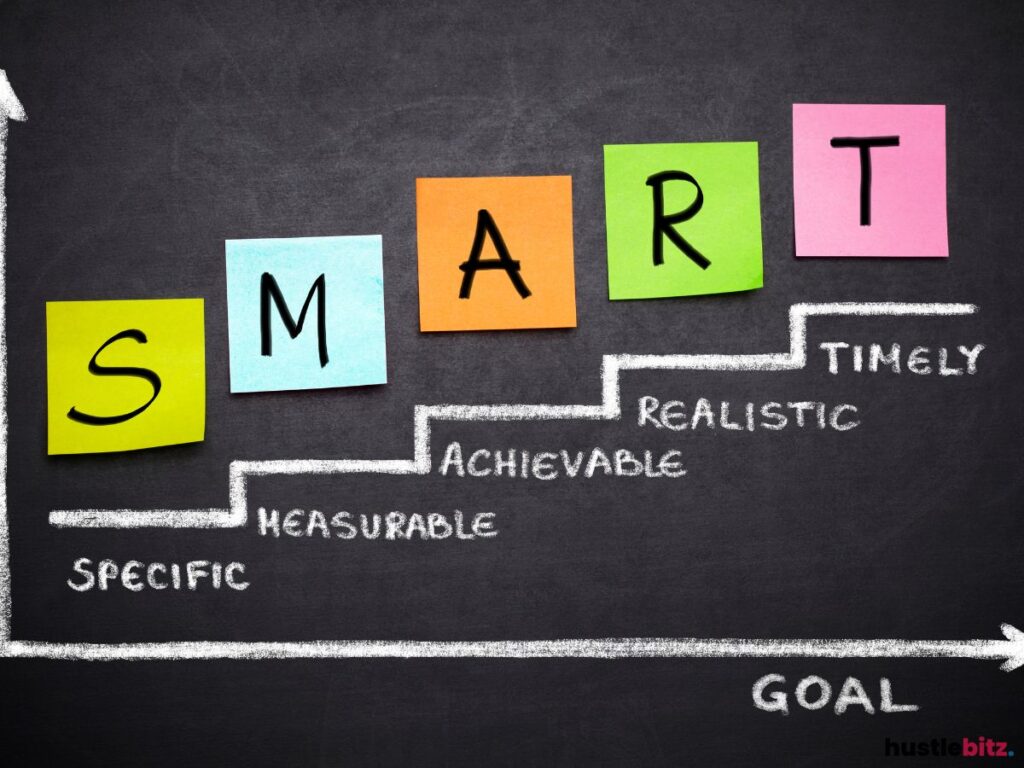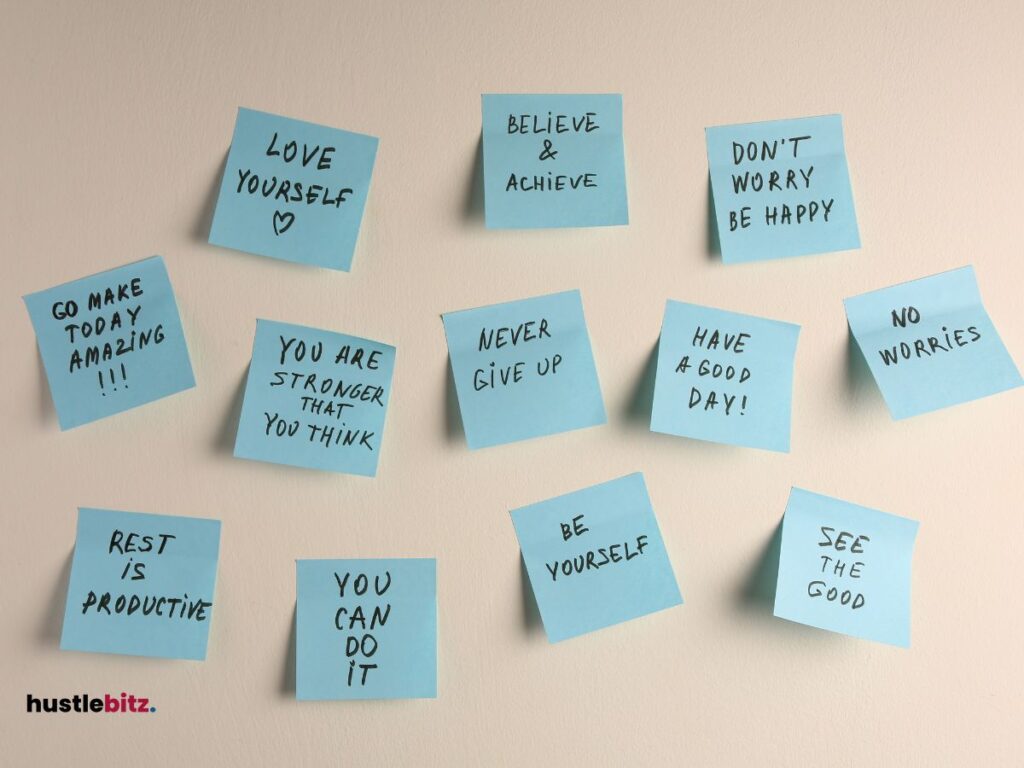Impactful goal-setting techniques are crucial for career growth. Employ the SMART criteria to create Specific, Measurable, Achievable, Relevant, and Time-bound goals. Balance short-term and long-term objectives to maintain motivation and establish a clear vision. Regular self-assessment helps identify strengths and areas for improvement, while flexibility allows adaptation to new opportunities. Visualization techniques and affirmations can reinforce commitment and maintain focus. Additionally, setting specific and measurable targets promotes accountability. Together, these strategies create an effective framework for achieving professional aspirations. Discovering these techniques in practice can unveil more ways to elevate your career trajectory.
Key Takeaways
- Implement the SMART criteria to ensure your goals are Specific, Measurable, Achievable, Relevant, and Time-bound for clarity and focus.
- Regularly engage in self-assessment to identify strengths and areas for improvement, aligning your goals with personal values and aspirations.
- Utilize visualization techniques, such as vision boards and guided imagery, to create a mental picture of your career goals and boost motivation.
- Establish accountability partnerships to foster commitment, track progress, and provide valuable feedback on your goal-setting journey.
- Incorporate flexibility in your goal-setting approach to adapt to changing circumstances and seize new opportunities for growth.

Understanding Goal Setting

Understanding goal setting is fundamental to achieving career growth, as it provides a structured framework for defining aspirations and measuring progress. When individuals articulate their career aspirations, they align their objectives with personal values, creating a roadmap that enhances motivation factors. This clarity not only fuels ambition but also directs efforts towards professional development and skill enhancement.
Effective goal setting encourages the adoption of strong time management practices, enabling individuals to allocate resources efficiently and prioritize tasks that contribute to their long-term objectives. Furthermore, the presence of accountability partners can significantly bolster commitment to these goals. By sharing aspirations with mentors or colleagues, individuals can foster a supportive environment that reinforces responsibility and encourages progress.
In addition to personal accountability, goal setting opens avenues for networking opportunities. Engaging with professionals who share similar aspirations can lead to valuable insights and collaborations that enhance one’s career trajectory. As individuals navigate their professional landscapes, mindset shifts become essential; embracing challenges and learning from setbacks can transform perceived failures into growth opportunities.
Moreover, regular performance reviews serve as a critical touchpoint in the goal-setting process. They provide a structured opportunity to evaluate progress against established benchmarks, facilitating adjustments necessary for continued advancement. By integrating these elements into their goal-setting approach, individuals can create a comprehensive strategy that not only supports career aspirations but also fosters a culture of continuous improvement and success.
The SMART Criteria

A structured approach to goal setting, such as the SMART criteria, can significantly enhance the effectiveness of career development strategies by ensuring that objectives are Specific, Measurable, Achievable, Relevant, and Time-bound.
Utilizing the SMART criteria lays the groundwork for setting clear and actionable goals, enabling individuals to define specific outcomes they wish to achieve.
Specificity in goal setting means identifying precise tasks rather than vague aspirations. For instance, instead of saying “I want to improve my skills,” one might state, “I aim to complete a certification course in project management.” This clarity allows for measurable progress, as individuals can track their advancement against defined benchmarks.
Moreover, the emphasis on achievable goals promotes realistic expectations. By setting objectives that are attainable, individuals can maintain motivation and avoid frustration. This aspect is crucial in ensuring that the goals remain within reach while still challenging.
Time-bound objectives add a layer of urgency and focus. Establishing deadlines encourages individuals to prioritize relevant tasks and allocate resources effectively. By setting a timeline, one can evaluate success more easily, assessing whether the goals were met within the specified timeframe.
Ultimately, the SMART criteria guide individuals in creating structured, actionable steps towards their career aspirations, allowing for a systematic approach to personal and professional growth.
Visualization Techniques

Visualization techniques serve as powerful tools for individuals seeking to enhance their career growth by creating vivid mental images of their goals and desired outcomes. These techniques involve various methods that can significantly impact motivation and performance, making them essential for achieving career aspirations.
One effective approach is the creation of vision boards, where individuals compile images and words that represent their goals and dreams. This visual representation serves as a constant reminder of their objectives.
Guided imagery, another popular method, involves mentally picturing oneself successfully navigating career challenges, fostering a sense of confidence in one’s abilities.
Mental rehearsal is a technique often used by professionals to practice scenarios in their minds, ensuring they are prepared for real-life situations. Positive visualization reinforces a constructive mindset by focusing on successful outcomes, while outcome imagery allows individuals to envision the end results of their efforts, strengthening commitment to their goals.
Creative visualization goes beyond simple daydreaming; it requires engaging all senses to build a detailed mental picture of one’s future self in a thriving career. Visualization exercises can include vision mapping, where goals are plotted out visually, creating a clear path to success. Immersive visualization takes this a step further by encouraging individuals to fully immerse themselves in their envisioned future, experiencing emotions associated with their achievements.
Incorporating these techniques into daily routines can transform ambition into tangible results, making visualization an invaluable aspect of career growth strategies.
Short-Term Vs. Long-Term Goals
Balancing short-term and long-term goals is crucial for effective career development, as each type serves distinct purposes in guiding professional growth and achievement.
Short-term goals often yield immediate results, providing short-term benefits that foster motivation and a sense of accomplishment. Conversely, long-term goals establish a long-term vision that helps navigate your career path toward significant achievements.
To optimize your goal-setting approach, consider these three key strategies:
- Prioritizing Goals: Clearly define which goals are essential for immediate success and which contribute to your overarching career aspirations. This clarity facilitates timeframe determination and ensures that your efforts are aligned with your ambitions.
- Skill Development: Focus on building competencies that will aid both short-term tasks and long-term objectives. Engaging in continuous skill development not only enhances your capabilities but also sets the stage for achieving career milestones.
- Accountability Partners: Collaborate with mentors or peers who can serve as accountability partners. Their support can enhance your progress tracking and offer necessary feedback, contributing to both your short-term achievements and long-term goals.
Moreover, incorporating adaptability strategies is essential, as they allow you to adjust your plans in response to changing circumstances, ensuring that your motivation factors remain aligned with your career trajectory.
The Role of Self-Assessment

Self-assessment plays a pivotal role in identifying personal strengths, weaknesses, and areas for improvement, serving as a foundational step in effective goal setting for career growth.
Engaging in self-reflection benefits individuals by fostering a deeper understanding of their personal values and career aspirations. This introspective process allows for a comprehensive skill assessment, enabling professionals to pinpoint their strengths and evaluate their weaknesses.
Incorporating feedback mechanisms, such as performance reviews or peer evaluations, can further enrich the self-assessment process. Constructive feedback provides insights that may not be apparent during self-reflection, offering a more balanced perspective on capabilities and areas needing attention. By utilizing feedback, individuals can adjust their goals to align with their evolving career aspirations and motivation factors.
Moreover, effective time management is essential in the self-assessment journey. Allocating time for regular reflection ensures that individuals consistently evaluate their progress and adjust their goals accordingly. This ongoing evaluation creates a dynamic approach to personal and professional growth, allowing professionals to remain agile in their career paths.
Ultimately, self-assessment serves as a catalyst for setting meaningful and achievable goals. It empowers individuals to create a roadmap that reflects their unique strengths, addresses weaknesses, and aligns with their long-term aspirations. By prioritizing self-assessment, professionals can enhance their career trajectory and ensure that their goals resonate with their values and ambitions.
Importance of Setting Specific, Measurable Targets
Establishing specific, measurable targets is crucial for transforming vague aspirations into actionable goals that drive career advancement. When professionals articulate their objectives with clarity, they lay the groundwork for effective progress tracking and robust performance metrics. This approach not only enhances goal clarity but also fosters target alignment across various focus areas.
To illustrate the importance of specific, measurable targets, consider the following three elements:
- Specific Objectives: Clearly defined goals eliminate ambiguity. For instance, instead of saying, ‘I want to improve my skills,’ one might set a target to ‘complete two certification courses in digital marketing by the end of Q3.’
- Measurable Outcomes: Establishing quantifiable benchmarks facilitates the evaluation of progress. A measurable outcome could be, ‘Increase my sales by 15% over the next six months,’ providing a clear metric for success.
- Timeframes Established: Setting deadlines creates urgency and accountability. By committing to a timeframe, such as ‘submit my promotion application by December 1st,’ individuals can maintain focus and momentum.
Incorporating accountability partners into this framework can enhance motivation and commitment. These partners can assist in monitoring progress and ensuring that individuals stay aligned with their established targets.
Ultimately, the practice of setting specific, measurable targets not only streamlines results evaluation but also empowers professionals to navigate their career paths with confidence and clarity.
Incorporating Flexibility

While specific, measurable targets are vital for career advancement, incorporating flexibility into the goal-setting process allows individuals to adapt to changing circumstances and seize new opportunities. This adaptability is pivotal in today’s fast-paced work environment, where environmental factors can swiftly alter priorities and available resources. By employing adaptive strategies, professionals can navigate these shifts effectively.
Mindset shifts are essential in fostering a flexible approach to goal setting. Embracing the possibility of change encourages individuals to prioritize tasks based not just on their original intentions but also on new insights gained through feedback loops. This iterative process promotes continuous learning, enabling individuals to refine their objectives and align them with current realities.
Effective time management and emotional resilience are also critical components of a flexible goal-setting framework. By allocating time judiciously and maintaining composure during unforeseen challenges, professionals can adjust their plans without losing momentum. Furthermore, leveraging support networks can provide valuable resources and perspectives that enhance adaptability.
Incorporating flexibility into career goals not only prepares individuals for unexpected challenges but also opens doors to innovative solutions and pathways. By committing to a flexible mindset, professionals can ensure their goals remain relevant and achievable, ultimately fostering sustained career growth. Thus, while maintaining specific targets is important, the ability to pivot and adapt is equally crucial for long-term success.
The Power of Affirmations

Harnessing the power of affirmations can significantly enhance an individual’s motivation and confidence, driving them toward their career goals. By integrating affirmations into daily rituals, individuals can cultivate a positive mindset that fosters mental resilience and emotional wellness. This practice not only reinforces beliefs but also empowers individuals to overcome challenges and persist in their ambitions.
To maximize the effectiveness of affirmations, consider implementing the following self-empowerment strategies:
- Affirmation Frequency: Regularly repeating affirmations helps to solidify positive beliefs. Aim for multiple repetitions each day, particularly during morning routines or before significant tasks.
- Visual Reminders: Place motivational quotes and affirmations in prominent locations, such as your workspace or home. These visual cues serve as constant reminders of your aspirations and help maintain focus.
- Gratitude Practices: Pairing affirmations with gratitude enhances their impact. Spend a few moments reflecting on what you are thankful for, then affirm your strengths and capabilities. This dual approach fosters a more profound sense of fulfillment and reinforces a positive outlook.
Incorporating these techniques into your daily life can significantly improve your affirmation practice, leading to enhanced motivation and confidence. As you build a habit of positive reinforcement, you will cultivate an environment conducive to achieving your career goals.
Final Thoughts
Effective goal setting is essential for career growth, combining techniques like SMART criteria, balancing short-term and long-term objectives, and utilizing visualization methods to create a clear, actionable plan. Regular self-assessment, specific and measurable targets, and flexibility are crucial for adapting to changing circumstances while maintaining focus. Affirmations further bolster motivation and confidence, reinforcing commitment to career aspirations. By integrating these strategies, you build a robust framework for career advancement, ensuring continuous progress and alignment with evolving goals and opportunities.




